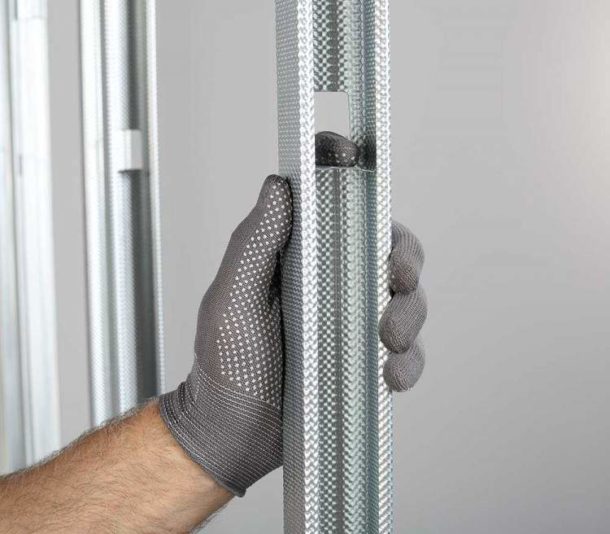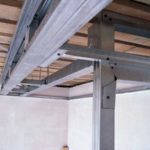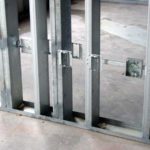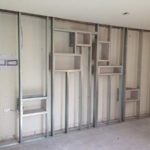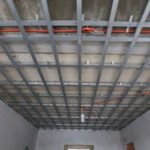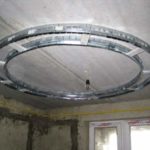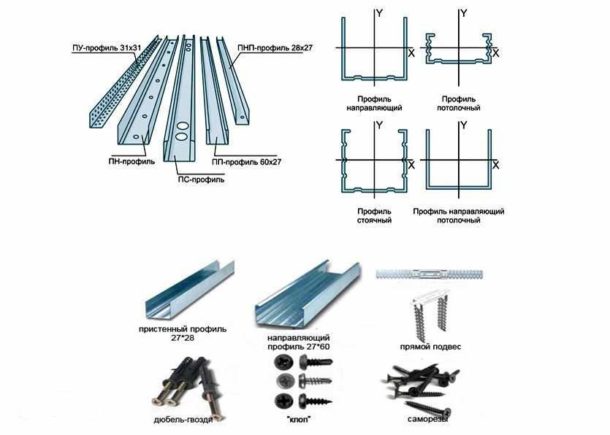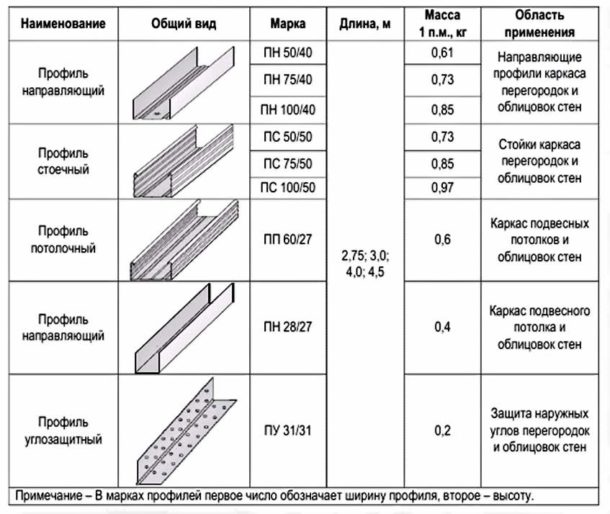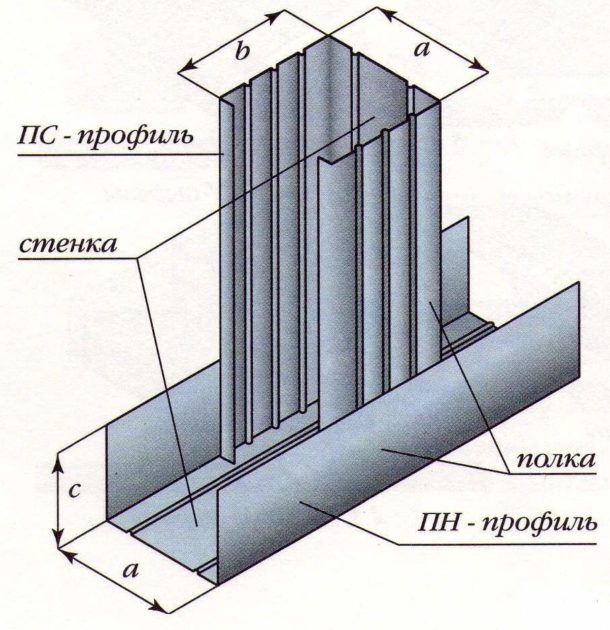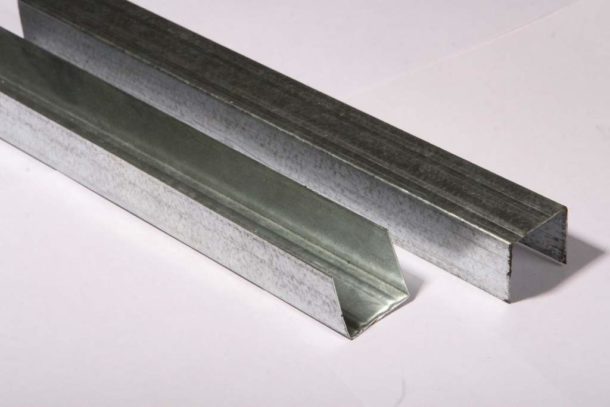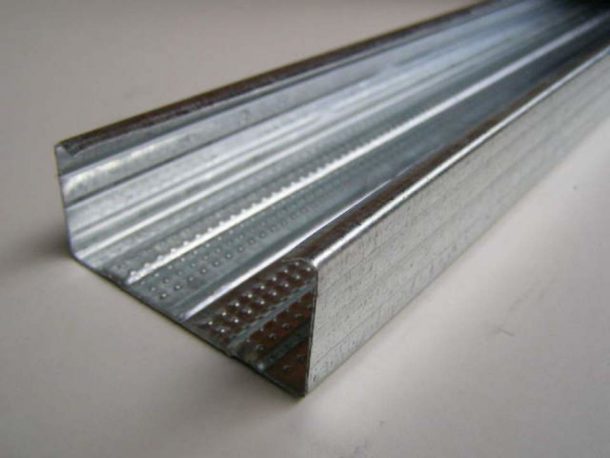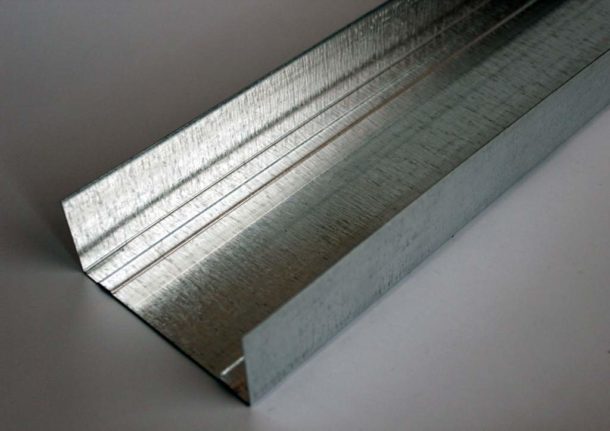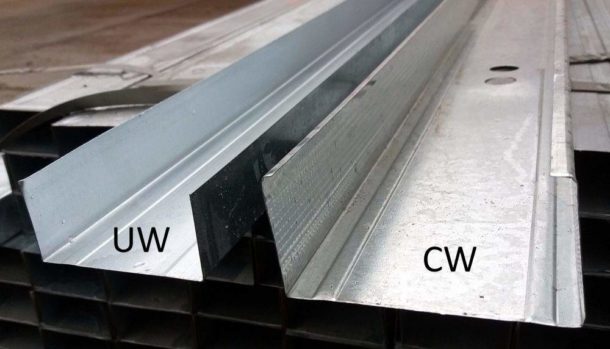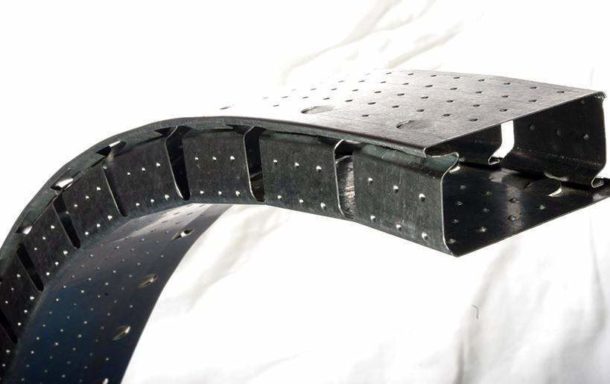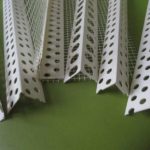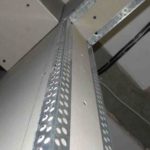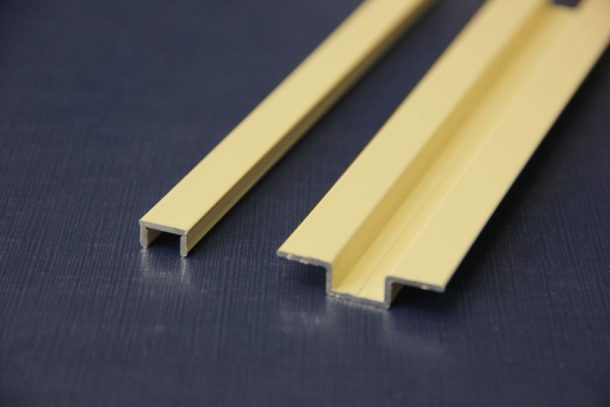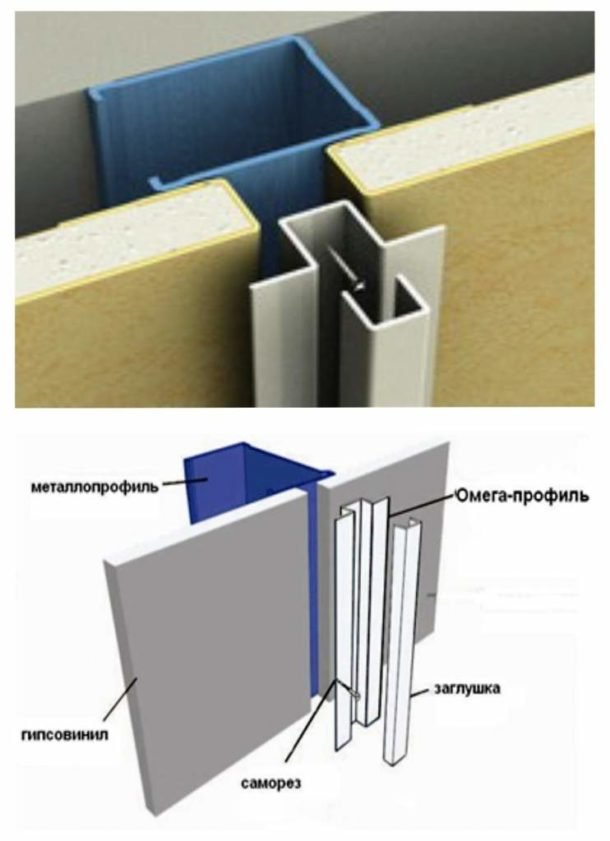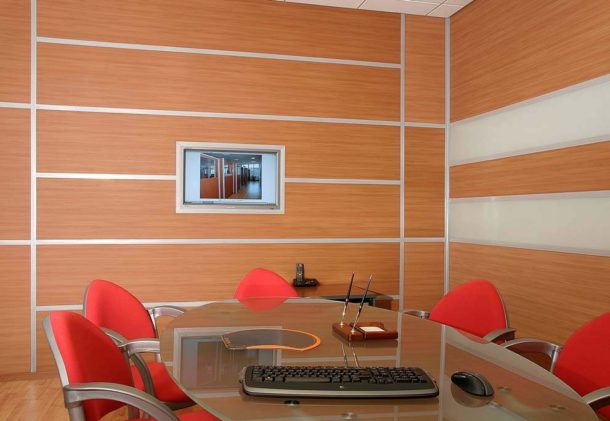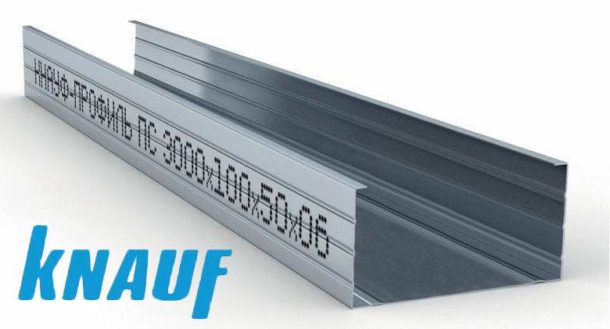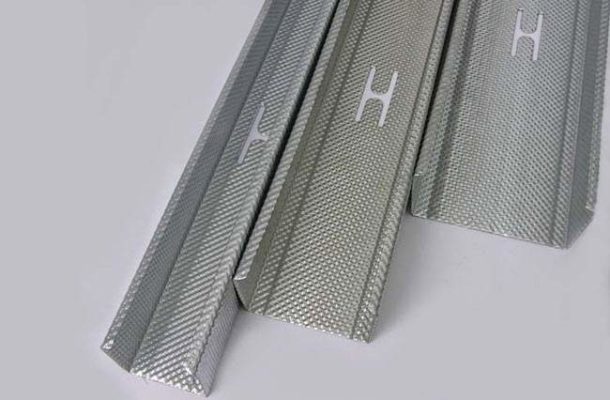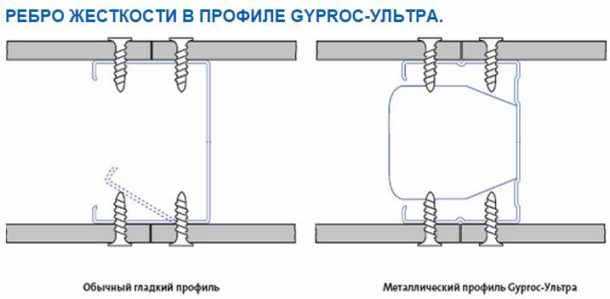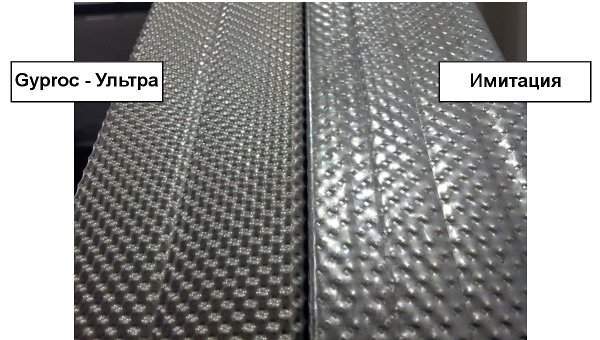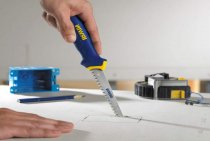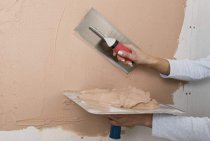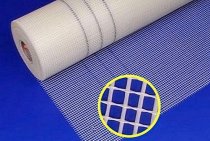The durability of the drywall construction is determined by the strength of the frame, and it directly depends on the competent selection of components. Let's figure out which profile for GKL exists and how to choose it correctly.
Advantages of using a metal profile
Drywall is fixed in three ways:
- Kstenam on glue. Only suitable for flat surfaces without large drops.
- TO timber frame. An affordable option, but wooden elements are afraid of microorganisms, fungus and rodents. In addition, the bars change their geometry under the influence of temperature and humidity: the structure warps, and the drywall attached to it cracks.
- To a frame made of metal profile.
Advantages of metal construction:
- The profile is made of galvanized steel, resistant to rust. She is not afraid of mold, fungus or insects. Therefore, the service life of the frame is practically unlimited.
- Unlike wood, a metal structure does not react to changes in air humidity: its geometry remains constant.
- The entire variety of profiles is unified: having bought the desired version of one type, it is easy to select accessories that are appropriate in size for it.
Because of these advantages and ease of installation, craftsmen prefer to use a metal frame.
- Profile construction
- Partition frame
- Wall construction with niches
- Ceiling frame
- Curved ceiling design
What is the profile like?
We will understand the variety of metal profiles. There are two main types of application:
- Guides - fastened along the perimeter of the structure to the walls, floor or ceiling.
- Rack-mounted - inserted into the guides and fixed in them. They form vertical and horizontal frame elements. They carry the main load: it is to them that drywall sheets are screwed.
At the place of application, the metal profile happens:
- Wall.
- Ceiling.
- Partition.
There are also special options: corner, arched and omega profile. Consider all types of profile for GKL in order.
Wall frame profile
For walls you will need 2 types of metal profiles:
- guide UD (PNP);
- rack CD (PP).
guide
The parameters of the future frame are set by the guide profile, marked with the letters PNP or UD (the products of the Knauf company are designated in Latin). There are holes in the back of the part through which it is attached to the surface with dowel-nails. If their step does not suit you, then it is easy to drill new ones with a drill.
PUP Profile Options:
- Length - 3 meters. If desired, you can order guides of greater length - up to 6 meters. But this part of the frame is easily assembled from separate pieces rigidly fixed to the surface, so the length does not matter.
- The width of the base (back) - 50, 65, 75 or 100 mm.
- The height of the side part, called the shelf, is 40 mm.
- The diameter of the holes in the back for dowels is 8 mm.
rack
The main part of the frame (stands and lintels) is constructed from a carrier or rack profile, designated PP or CD.
- Racks must be solid, it is undesirable to increase them. Therefore, you need to immediately select the parts of the required length, which varies from 2.5 to 6 meters.
- The width of the back is 40–100 mm. Racks are inserted into the guides, so they have matching dimensions.
- The height of the side shelf is 50 mm.
Profiles differ in metal thickness: in the economy class, this characteristic is 0.4 mm.
Tip: use stiffer elements with a metal thickness of 0.55–0.6 mm.
Ceiling frame details
When leveling ceilings or constructing multi-tiered structures, guides and load-bearing profiles are also used. They differ from products for walls in size:
- Guides (PNP or UD) are available in 28 mm width and 3,000 mm length. The height of the side shelf is 27 mm.
- Carriers (PP or CD) are also distinguished by the presence of stiffeners. They help the profile to hold the weight of the ceiling structure without deformation. Back width - 60 mm. The length and height of the shelf are the same as for the rails.
Partition profile
The products used in the installation of partitions differ in the thickness of the metal, which is 2 mm. Strength is also added by additional stiffeners, which are equipped with many models.
- The guides, marked UW or PN, have a back with a width of 4.2 to 15 cm. With their help, you can create a partition of various thicknesses. The length is 2–4 meters, the height of the shelf is 40 mm.
- Rack profiles (CW or PS) with the same width have shelves 50 mm high. Often they have additional notches that facilitate the laying of electrical wiring or other communications. The length of these elements is 3–4 mm, if longer racks are needed, they will be made to order.
Doorways are reinforced with a reinforced profile marked UA. It is produced in lengths of 3, 4 and 6 meters. Shelf height is 40 mm with backrest widths of 50, 75 and 100 mm.
Other types
Arched profile (PPA) is designed to form curved surfaces. It is convex and concave. Created on the basis of the carrier, therefore the same size as it.
The price of an arched profile is higher than a regular rack. For this reason, many craftsmen make fragments of the arched frame on their own, making triangular cuts in the side shelves of the guides or load-bearing elements. This step allows them to bend freely. The stronger the bend is needed, the more often the cutout petals are located.
Corner profile protects plasterboard corners from damage during operation. It is attached to a layer of putty, therefore it has a perforation through which excess mortar is squeezed out. The length of such elements is 3 meters, corners with sides of 25 or 31 mm are produced in width.
- Angular
- Corner finishing
Omega profile owes its name to the internal section, reminiscent of the Greek letter of the same name. Its purpose is to fix panels of laminated drywall on the wall, which are not suitable for the usual methods of fixing plasterboard: they will violate the integrity of the decorative layer.
The sheets are inserted into the grooves formed by the curly strips and are securely pressed against them.
The surface formed by laminated drywall using such fasteners is divided into separate squares or rectangles. Often this is used in the overall design of the room, for example, as in the photo below.
Selection rules
It is not enough to determine the types of profile required for installation, it is important to choose reliable products. Trying to save on the frame is not worth it: the durability of the entire drywall construction depends on its quality. In order not to worry about the quality of the metal profile, it is recommended to choose products from well-known manufacturers. Let you have to pay a little more for the brand.
You need to pay attention to the following features:
- The quality of steel, on which reliability and durability depend.
- Rigidity, determined by the thickness of the metal and the correctness of its processing. The optimal profile thickness is at least 0.5 mm, and preferably 0.55.
- The lightness of the racks and guides: it will be easier to work with them.
These parameters correspond to products from Knauf and Gyprok.
Knauf
Advantages of a metal profile from Knauf:
- Use of galvanized steel with a thickness of at least 0.6 mm.
- The density of the joints is achieved due to the special geometry of the elements, which makes it possible to do without gaps or deformation of the shelves.
- Stiffening ribs increase the strength of the frame and facilitate orientation during its assembly.
- Holes with a diameter of 33 mm are provided for laying communications and fastening with dowels.
The only drawback of the products of this manufacturer is the high cost.
Gyprok
Gyprok profiles are superior to Knauf products in terms of price / quality ratio.
Their advantages:
- Strength is ensured by cold hardening using the unique UltraSteel® method.
- The corrugated surface of the element is covered with identical recesses. This allows you to screw the self-tapping screw into any point of the profile at the desired angle without slipping. At the same time, a “harpoon” effect is observed: it is easy to screw in a screw, but it is much more difficult to get it out.
Fake profiles of this manufacturer are often found in hardware stores, but it is not difficult to recognize them: branded elements are distinguished by clear and symmetrical corrugations across the entire width of the part.
The conditions under which the metal profile was stored are also important. Despite its resistance to corrosion, it is not allowed to store it outdoors. Elements should not have burrs and scratches that violate the integrity of the galvanized layer. It is better to take products in the original packaging.
The price of a profile of different types
The approximate cost of standard profiles 3 meters long from Knauf and Giprok is indicated in the table. Please note that the sizes of some elements vary from manufacturer to manufacturer.
| Knauf profile type | price, rub. | Gyprok profile type | price, rub. |
|---|---|---|---|
| Rack ceiling PP 28×27 | 95 | Rack ceiling PP 28×27 | 113 |
| Rack wall PP 60×27 | 135 | Rack wall PP 60×27 | 148 |
| Ceiling guide PNP 28×27 | 100 | Ceiling guide PNP 28×27 | 113 |
| guide PN 50 × 40 | 183 | guide PN 50 × 37 | 155 |
| guide PN 75 × 40 | 239 | guide PN 75 × 37 | 230 |
| guide PN 100 × 40 | 281 | guide PN 100 × 37 | 240 |
| rack PS 50 × 50 | 193 | rack PS 50 × 40 | 184 |
| rack PS 75 × 50 | 210 | rack PS 75 × 40 | 162 |
| rack PS 100 × 50 | 235 | rack PS 100 × 40 | 230 |
In conclusion, we recall that for the construction of a frame for drywall, in addition to the metal profile, others will also be needed. accessories - fixture, connectors and hangers. Details about the types of screws and a calculator for calculating their number are in this article.
